Although Bratislava has eagerly embraced the joys of the free market economy, and swanky westernised hotels, bars, restaurants and cafés cater for the high-fashion-clad beautiful youth, there are still many places where you can find remnants of the past regime, when Czechoslovakia was part of the Eastern Bloc behind Churchill’s Iron Curtain. Here are some places to check out the Socialist relics:
Authentic Slovakia Tour
This brilliant tour company, Authentic Slovakia, was started by two brothers, Peter and Branislav Chrenka. With their enthusiastic team of guides they offer an insight into the real Bratislava and its surroundings. Tours include a ‘Post Communist City Tour’ in a 1970s Škoda around off-the-beaten-path places of Bratislava’s communist past and recent transformation.
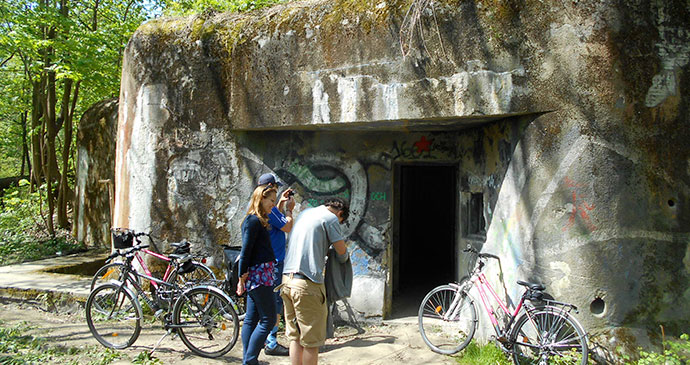
Alternatively, pedal away on a guided ‘Iron Curtain Bike Tour’ that visits bunkers on the border with Austria and Socialist housing areas. An all-day ‘Castle Ruins Tour’ travels to ruins in and around Bratislava, while a ‘Village Pub Crawl’ is a great way to meet the locals and share a drink or two. The cost depends on the number of participants: less for more people.
Petržalka
Petržalka is the largest suburban district of Bratislava, with about a third of Bratislava’s population living here (104,000). It is in most part a residential area with blocks of flats known as paneláky or panels, owing to the pre-fab construction material. There are records of a settlement here from 1225, when it was inhabited by Pecheneg mercenaries on guard duty near the Danube.
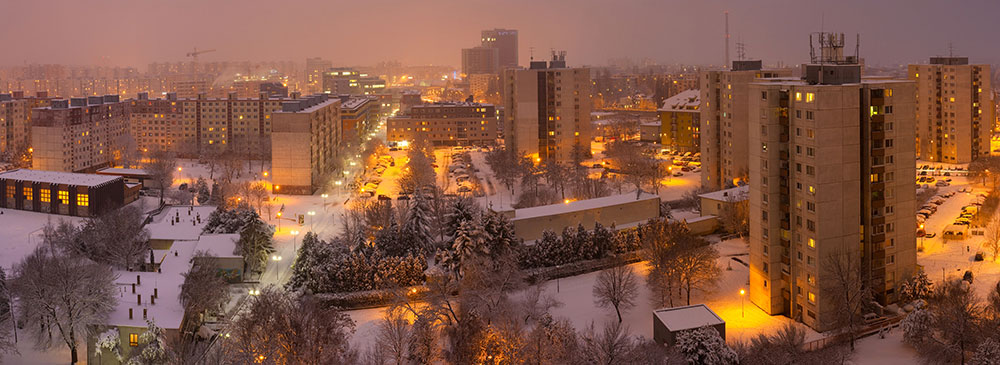
In the late 18th century when neighbouring Pressburg/Pozsony was the capital of Hungary, Petržalka was called Pozsonyligetfalu (Bratislava Park Village). In 1891, the first railway bridge was built, providing a link to the capital and in 1919, the village – the largest in Czechoslovakia – was renamed Petržalka (‘petržlen’ means ‘parsley’) acknowledging all the vegetables and herbs grown there. Construction of the grey housing blocks, or ‘panelák’ began in 1973; it developed a reputation for drugs and petty crime, but is now a green and pleasant area.
Slavín Monument
Sitting atop Slavín Hill, the Slavín Mounument is visible from all parts of town. It is a poignant memorial by Ján Svetlík (1960) to the 6,845 Red Army soldiers who died in the 1945 battle for Bratislava, buried here in 317 individual graves and six mass graves. The names of Slovak towns and the dates they were ‘liberated’ by the Red Army are engraved around the base of the monument.
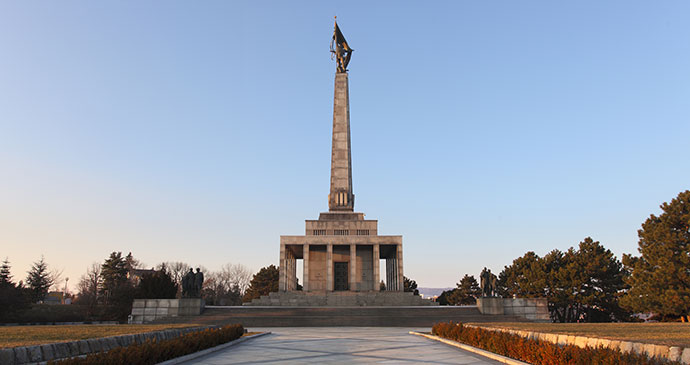
The centrepiece is a 37m-tall column with a 7m-tall soldier crushing a swastika and triumphantly raising a flag. From here, there is a great view of the business heart of the city and, in the other direction an excellent vantage point from which to see Bratislava Castle and the UFO Tower.
Hotel Kyjev
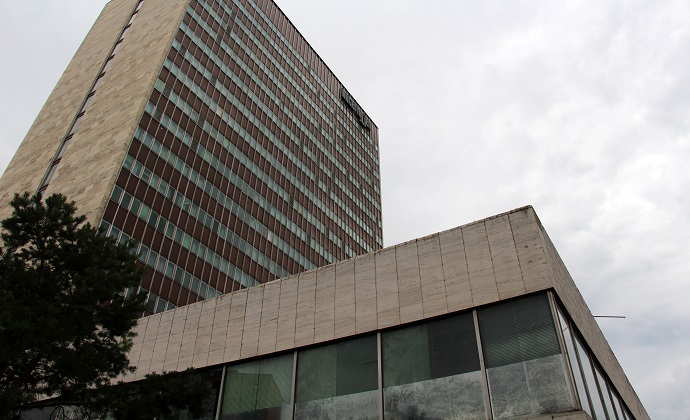
The 65m-tall tower block was built in 1973 and offered 15 floors of accommodation to visiting dignitaries from fellow Eastern Bloc countries. The hotel no longer functions, but the building remains while the city decides its fate.
Slovak Radio Pyramid
It’s well worth the walk out towards the northeast of town to see this bizarre creation – a huge brown inverted pyramid balancing improbably on its pointed tip, which looks like it has been rammed deep into the ground.
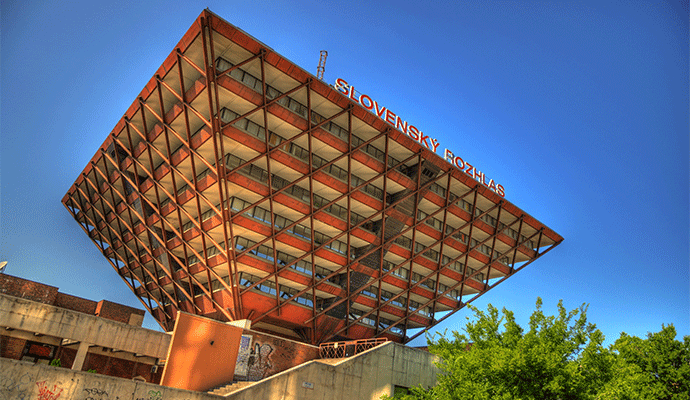
It was built during 1971–85, and although it looks like it is made of wood, it is actually brown COR-TEN steel. Broadcasting began from here in March 1985 – the acoustics are excellent inside. You will see this building on your left if you take tram 1 into town from the main railway station.
Kamzík TV Tower
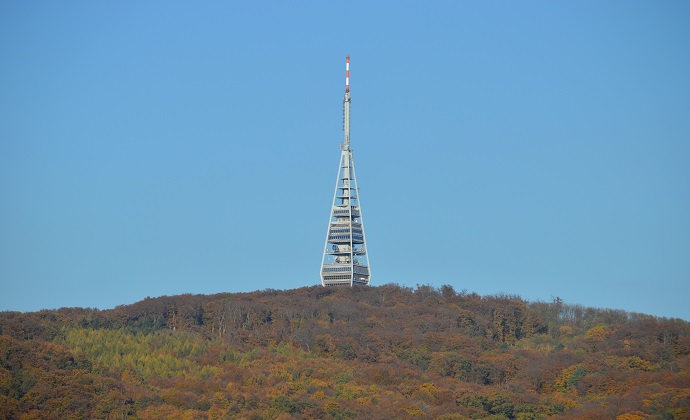
The 200m-tall tower, which looks like a drop earring, dominates the skyline in the hills north of the city centre. Built in 1975, it is home to the revolving Altitude restaurant. The Mediterranean restaurant has been renovated, but still rotates gently, so watch where you put your belongings down.
Uršulínska
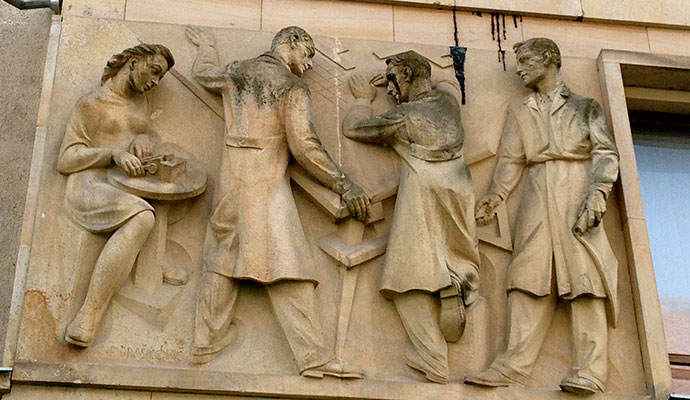
This street has two reliefs in plaster on the side of the city hall: one of architects planning and the other of workers toiling.
Most SNP
Most SNP stands for ‘Slovenské národné povstanie’ (‘Slovak National Uprising’). Pedestrians walk over this bridge on a level just below the traffic. It was completed in 1972 as the finishing touch to a highway barging straight through the centre of the city; the project required the destruction of 226 buildings, two-thirds of Bratislava’s Old Town and the Jewish quarter.
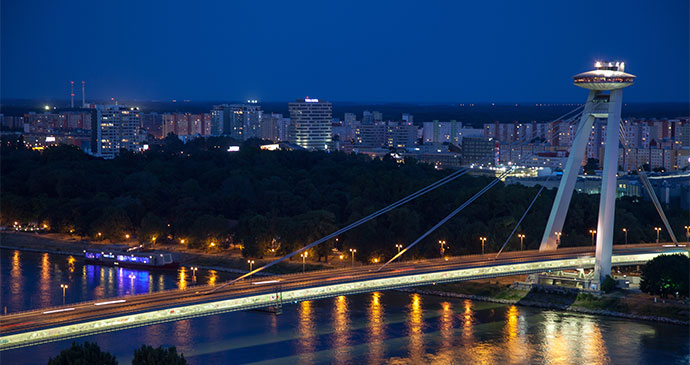
Under the north end of the bridge, a defaced inscription on a triple-flame plaque tells of a ‘special friendship and brotherhood with the people of the Soviet Union’. Previously called ‘Nový Most’ (New Bridge), it was renamed when the newer Apollo Bridge was built. The UFO-like spaceship hovering above the bridge was built at the same time and houses a restaurant with observation deck which gives a magnificent view of the city from a height of 85m.
Keen to explore more of Bratislava? Start planning your trip with 10% off our guide:
